Front Rudder – by Mark Reid

Around And Alone
This has been a year like no other. As far as sailing events go, they have been few and far between. Our yearly St. Francis Yacht Club Rolex Big Boat Series get together was rightfully, yet unfortunately cancelled. If it wasn’t Coronavirus, the tragic fires would have put the kibosh on the whole affair.
We can always look to next year, but can we? We have lost so many, but hope is an eternal optimism and that is what brings us forward, making us resolute.

So with so many events falling by the wayside, pro sports have brought us a sense of normalcy and now with the America’s Cup on the horizon we have the Vendée Globe Race which given the solo, solitary nature of how the event works made it a reality this year. Be it a complex one. With a will, there is a way.
33 sailors are now sailing out there, somewhere in the South Atlantic, on their own in some of the most sophisticated yachts ever built. The IMOCA 60’s have come a long way in just over 30 years and now with foiling capabilities the speeds are astounding.
This isn’t just 30 knots plus on the racecourse between the gates. This is 24/7 for months on end with no breaks or stopovers. The sailors who are skipper, tactician, mainsheet trimmers and grinders all in one; sleep, eat and sail on the go! Even as autopilot systems become more complex by the minute, with some teams rumored to spending more on those than sails it still comes down to the men and women who drive the boats to win or lose it on the water.
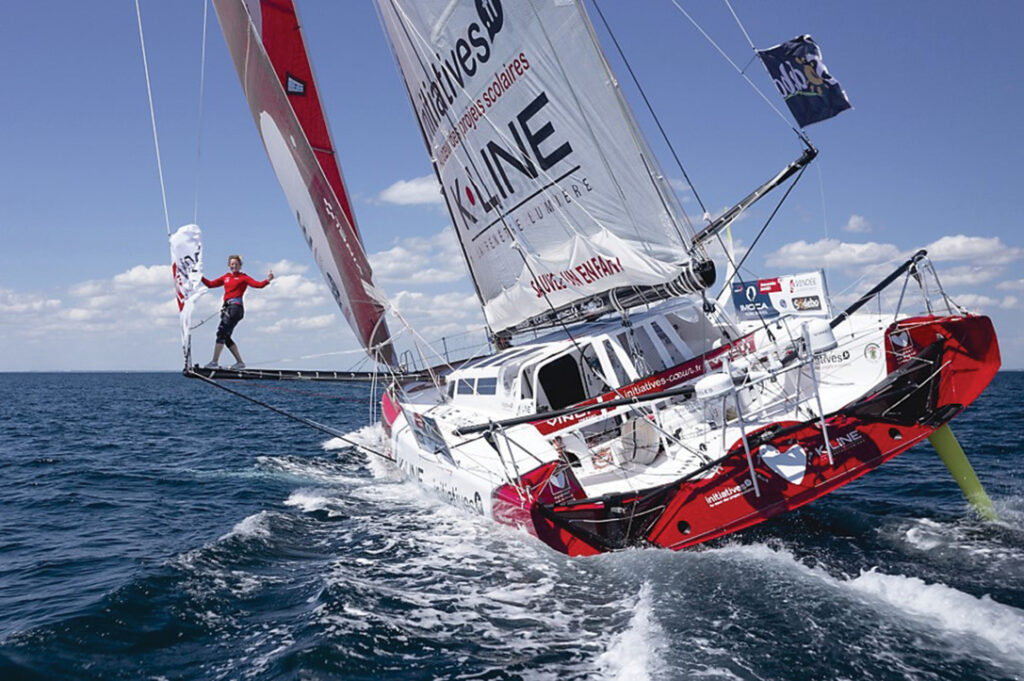
Change is constant, and one of the highlights of this year’s Vendée Globe Race is the inclusion of 6 women sailors which is a record for the event. Women have always sailed in the event, but their numbers have not been consistent. No women competed last time around and as with men, raising the dollars to compete is a steep hill to climb.
“No, bucks, no Buck Rodgers!” Isn’t that how the saying goes?
Six women hit the starting line this time with Clarisse Crémer on Banque Popular X; Samantha Davies on Initiatives-Coeur; Isabelle Joschke skippering MACSF, Alexia Barrier TSE-4MyPlanet; Pip Hare on Medallia; and Miranda Merron on Campagne de France.
Woman have become an equalizing presence in many “traditional” men’s sports of late and not just as competitors. In America women now can be seen refereeing in football, basketball and baseball as well as taking positions in coaching. Women’s participation in auto racing has been on equal footing for years and given successes from women like Janet Guthrie to Danica Patrick.
Sailing legend Dee Caffari who has sailed in many different forms of international racing, most notably The Ocean Race (ex-Volvo) has been quite outspoken on her views of the inequitable nature of being included in the “boys” club of sailing.

“There isn’t an easy answer. Because at the moment the sport is risking the girls not getting any rides and therefore not increasing their level of experience,” said Caffari. “Unfortunately, I think the only way you are going to get more women in the race (and others) will be for them to form their own campaigns. I don’t think you are going to get any invites from the guys, no matter what they say now while they’re in this race (The Ocean).”
In the first two editions of the Vendée Globe in 1989-1990 and 1992-1993, there were no women sailing in the event. The 3rd Vendée saw Isabelle Autissier, one of the best solo sailors in the world at the time and Catherine Chabaud break the glass ceiling paving the way to the diversity the sport needed. Chabaud would go on to finish in sixth place.
Then it was Ellen MacArthur. The young British sailing phenomenon who finished a stunning second in the 2000 Vendée Globe, less than 24 hours behind the winner! Michel Desjoyeaux.
In 2004-2005 it was Anne Liardet and Karen Leibovici. Two Brits carried the torch the next time as Samantha Davies, one of the favorites this time and Dee Caffari. Davies was part of the all-women SCA Volvo Ocean Race team in 2014/15.
As with the men, all the competitors will have a treacherous voyage ahead having to navigate, not only against the other teams; but dodging icebergs, whales, and others sea life in addition to manmade junk like wayward containers and other debris that unfortunately litter the world’s oceans these days.
For a sailor there is no feeling worse than hearing a thud in the middle of the night and then having to figure out what to do on the fly hundreds of miles away from any help or assistance. Which is forbidden anyway. You are on your own!
As we go to press race leader Charlie Dalin on Apivia is the only skipper among the top ten to have managed to hold speeds in double figures as the leaders of the Vendée Globe continue their slow but steady progress south towards the tip of Africa and the treacherous Cape of Good Hope as they wriggle their way across a band of light winds to get to the Southern Ocean.
Dalin and Thomas Ruyant on LinkedOut are desperately trying to track and stay with the breezes they have, a narrow, isolated band of wind which they are working to get the most out of by successfully staying under this wind flow, which could reward them with a perfectly timed arrival on the top of an eastwards moving low pressure system.
This in the weather modelling would slingshot them east to more than double their 298 miles lead on currently third placed Jean Le Cam on Yes We Cam!.
Dalin is certainly benefiting from leading into stronger breeze and appears to have a faster sail combination, likely a spinnaker, than his rival Ruyant.
The Vendée Globe is a very social media event. I encourage everyone to “like” the Facebook pages of the teams and skippers. It is a fascinating watch. We are their links to the outer world and who knows, send them a message or shout out! You might hear back. It helps to know French though in many cases. Also, you can follow the event on www.vendéeglobe.org/en
Rescue
Vendée Globe Race Direction has requested the assistance of four competing skippers, Germany’s Boris Herrmann (Seaexplorer-Yacht Club de Monaco), Yannick Bestaven (Maître CoQ IV) and Sébastien Simon (ARKEA PAPREC) to assist Jean Le Cam (Yes We Cam!) in the mission to retrieve solo skipper Kevin Escoffier from his life raft after he had to abandon PRB after activating his distress beacon.
Escoffier was racing in third place on the 22nd day, some 840 nautical miles SW of Cape Town, when his PRB got into difficulties and he was forced into his life raft.
He alerted his technical team telling them he had significant amounts of water coming into the boat and immediately triggered his yacht’s distress beacon.
The skipper closest to Escoffier’s position was Jean Le Cam, who immediately responded to the request. Upon arrival he established visual and voice contact with Escoffier who was in his life raft but he was unable to retrieve him because of heavy seas at the time and 25 knot winds.
As he got closer, he lost sight of the life raft and could not re-establish radio contact.
The three other skippers are now approaching the search area and at this moment as I send this to my editor he HAS BEEN RESCUED and is safe and sound!!
Hugo Boss’s Troubles
We have “another” as we go to press with the shocking news that one of the race favorites, the team with one of the largest budgets and largest profiles in international yacht racing, with a massive fan base has dropped out a mere 20 days after the start.
Hugo Boss with Alex Thomson, one of the best solo racers in the world is withdrawing from the Vendée Globe!
There was warning about 15 hours earlier from the team that Thomson notified his technical team on shore of damage to the starboard rudder of his Hugo Boss boat. The team immediately advised Thomson to disconnect the rudder to regain steerage. He now has control of Hugo Boss with one rudder and is safe and in no danger onboard. The team is working to assess the extent of the damage.
After incurring damage to the starboard rudder of the boat, Thomson has ceased racing and is now sailing the boat towards Cape Town, South Africa.
Thomson had since been sailing the yacht with just one rudder. After assessing the situation today, Alex and the team have decided that the only course of action is to cease racing and sail the boat to Cape Town.
“Unfortunately, a repair is not possible, said Thomson. “We therefore accept that this will be the end of the race for us. Myself, my team and our partners are of course deeply disappointed. We believe the best was yet to come in this race.”
Hugo Boss is currently 1,800 nautical miles from Cape Town and it is expected to take him around seven days to make the journey. He will do so without the use of his starboard rudder and so will proceed safely and cautiously.
The technical team will travel to South Africa to meet the yacht upon arrival.
“It’s taken me a few days to digest what’s happened and gather my thoughts. I’m normally a very-positive person but if I’m honest right now I feel pretty broken,” posted Thomson. “I’ve given my life to this sport and it’s a very difficult pill to swallow.
“I was averaging 21 knots, flying the small gennaker and one reef in the mainsail,” Thomson reported. “I was down below when there was a huge bang and the boat broached violently. The steering system was jammed and all I could do was roll the sails away.
“Once on deck I could see the rudder blade was broken and swinging around with a large piece of fishing gear jammed into the cracks. So, I think I must have hit something. It certainly looks that way. Now I am having to keep the boat flat while I sail the boat now with just one rudder to Cape Town.”
We had reported just a week earlier that Thomson had clearly been on the nightshift on Hugo Boss after coming in contact with debris that had weakened the structure of his bow. He had resumed racing mode taking the opportunity to trundle down the track in relatively benign breezes and flat seas after the first phase of his repairs to the internal longitudinal framing in the bow of his IMOCA 60.
“This is a mechanical sport so there are bound to be problems, these boats are still new and we haven’t sailed with them for a long-periods at high speeds”, said skipper Kevin Escoffier on PRB. “We will discover things as we go along. We are all taking care and not pushing our boats like we could be. There are a lot of situations where we don’t know how the boat will react in the long run and it’s true that with the foils, it brings new load constraints and we can’t control everything.
“It’s a new way of sailing. The boat just needs to accelerate and the teams and architects are pushing to go fast. Now it is up to each sailor to sail with his or her peace of mind. I have a lot of small issues to deal with, problems appear before I can detect them. I go around and check regularly, after the boat has been subjected to stress.
“Yesterday I spent quite a bit of time making composite on a piece of the foil well that had torn off, so it had to be sanded, ground, glued, it was a day spent in the workshop!” said Escoffier.
Sadly, again as we are heading to press Escoffier has had to abandon PRB and has dispatched his life raft.
LinkedOut, Out?
Just when Skipper Thomas Ruyant on LinkedOut felt he could take a breath with the leaders dropping like African flies exclaiming: “I’m happy!”, bad luck befell his effort as well. While lying in second place in the South Atlantic some 72 nautical miles behind leader Charlie Dalin (Apivia), Ruyant sustained damage to the port foil of his IMOCA 60 LinkedOut. He had to stop for a short period to assess and says he will now be unable to use the foil on the port side of his boat for the remainder of the race.
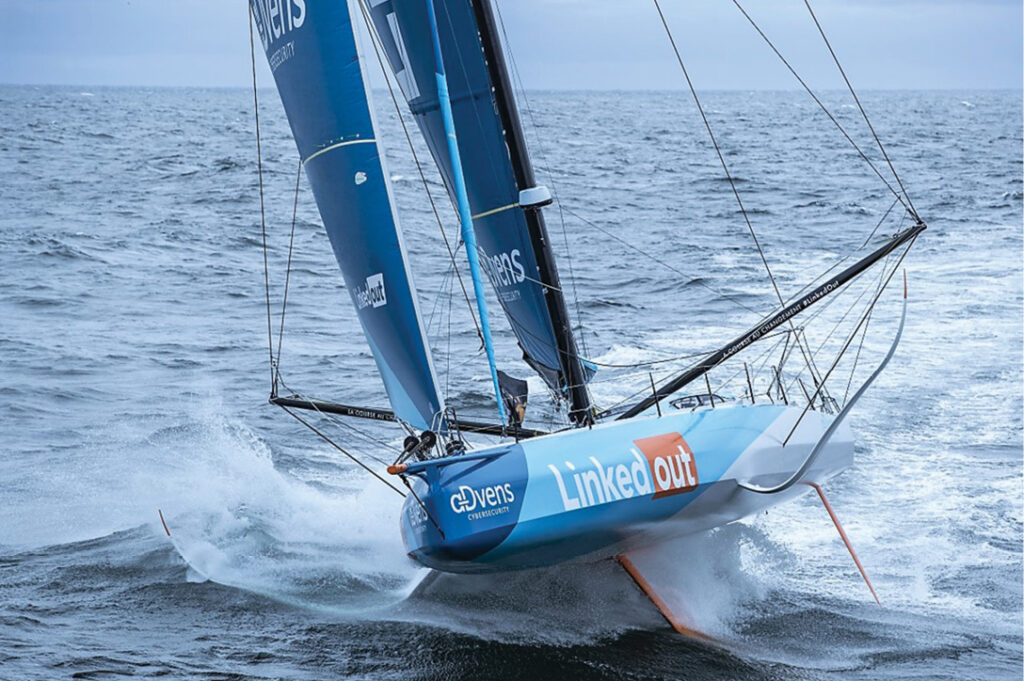
Ruyant told his team that while he was resting inside his boat LinkedOut, that he was woken by a loud noise outside the boat. He did not, however, feel any shock to the boat. But on inspecting the boat with his headtorch he immediately noticed major cracks in the “shaft” of his port foil. Ruyant immediately stopped the boat and sailed downwind to further inspect the damage.
“I was about 120 degrees to the wind, I was sailing at about at 20 knots when I heard this loud noise,” reported Ruyant. “I don’t really have an explanation. I have retracted the foil as much as I can, but most of the appendage is on the outside of the boat. In daylight I was able to inspect the foil and it’s okay at the top and after speaking with my team and the architects it seems safe. There is no water coming in and the foil well itself is undamaged. But the foil itself is cracked in a number of places. The structure of the foil is compromised. I am waiting for the designer’s analysis to see if I should cut it.”
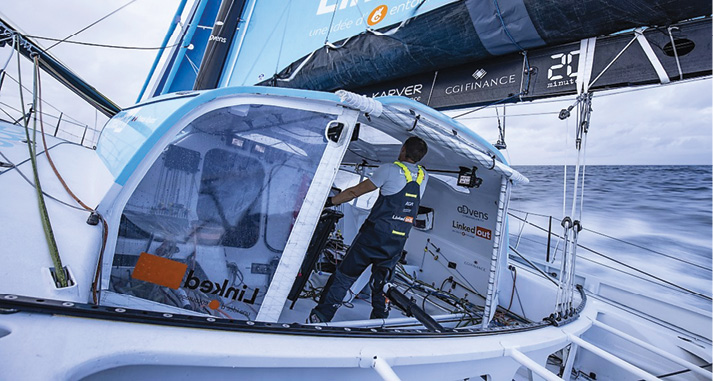
If Ruyant is massively disappointed, he isn’t showing it as he was close to the leader Dalin and having a great race so far. Although shocked the LinkedOut skipper is staying positive. “I am second in the Vendée Globe. Since small problems have built up which I managed to deal with, these really are topped by this damage. I carry on racing nonetheless even if I am a bit handicapped with only one foil. But I am comforting myself in the knowledge I still have my starboard foil, which is statistically the most important for a round-the-world race. The course is still very long. I continue, I’ll hang on in there!”
The foil is made up of two parts, a shaft and a tip. It is the tip that allows the sailboat to come out of the water thanks to the lift force it exerts. The shaft is the part of the foil which connects the tip to the hull.

“I have been having a series of good naps,” reported Ruyant on his progress in the race. “It is not like long nights of sleep, but it’s good, I’m getting a lot of rest. I am not particularly exhausted. I’m starting to get used to the boat’s speed. I sleep more restfully than at the beginning. You get used to everything.
“It’s true that you have weird dreams at sea. Sometimes I just wonder right off, I dream a lot! It’s not too great, a bit like a nightmare. But it’s all right, isn’t it? I don’t wake up in panic or sweat!”
Charal Returns For Repairs
Jérémie Beyou has never been afraid of being a pacemaker. Without waiting to see what the competition would do, he chose to quickly start the construction of his new IMOCA 60, Charal super early.
Launched in 2018, his monohull was able to benefit from the additional year of preparation. And in that year Jérémie Beyou’s team worked at ironing out the teething problems of the boat.
Unfortunately, Beyou was forced back into the pits for repairs after damage to Charal occurred as the fleet tackled a big frontal system off Cape Finisterre that saw the IMOCA 60’s pounding to windward in winds gusting to 40 knots and confused seas. Disappointed, Jérémie Beyou was forced to return 600 miles back to the start port after his IMOCA 60 Charal was damaged on the third day of racing.
Beyou made it clear he wants to return to the racecourse if the damage to his boat can be 100% repaired.
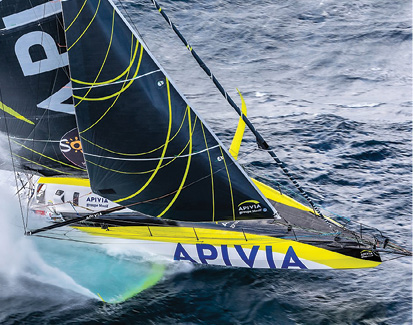
Beyou, who was the outstanding favorite to win the race, hit a floating object which on impact damaged one of Charal’s rudders and the mounting and control mechanisms. He broke a backstay and there was sundry composite damage to the deck and his mainsheet traveler.
“If technically it can be done, the plan is to go. That is the objective,” stated an emotional Beyou beside his black and silver hulled Charal. “I really want to go, that is not the issue, I want to maintain this frame of mind.”
Speaking to the media following the strike by a floating object, the cockpit was quickly covered to facilitate the composite repairs required and the damaged rudder was quickly removed.
“I am convinced that we will try and fix it, but the devil is in the detail.”
Technical Director of the Charal Sailing Team, Pierre-François Dargnies details, “It started when a sheet block tore off, which sprayed carbon all over the cockpit. Jérémie had to do a little repair, he got in the boat to get it all set up, and while he was inside the boat he hit something. In so doing, the boat gybed and it ended up on the other side. He then realized that the starboard rudder was damaged. He decided to wait for the passage of the front that night to start the repairs on the rudder.
“He tacked while waiting for the sunrise to be able to tackle this repair, but a few hours later the starboard backstay broke suddenly, probably because the sheet block is quite close beside backstay and the carbon shards must have sheared it.”
The 44-year-old French skipper who had to sail 600 miles back to Les Sables d’Olonne after damage to his Charal on the third evening of the solo non-stop around-the-world race has confirmed that he will restart the race on Tuesday afternoon despite the leaders being around 2,500 nautical miles south, approaching the Doldrums tomorrow.
“It’s strange to be replying to your questions away from my boat, Charal. The main problem, the one that made me turn back, was the issue with the rudder. Technically, however the most problematic to repair was the traveler. But actually, it was the rudder mounting and the control arm which had broken, and it is a structural part of the boat.”
A year after its launch, Charal showed its potential during the last Rolex Fastnet Race in which the new generation foiler clearly dominated. In the meantime, he had to learn how to balance perfectly this radically new boat, get used to sailing with the bigger, more powerful foils and get familiar with high speeds.
When he restarts the race, the leaders will be ahead of him more than 2500 nautical miles south approaching the Doldrums tomorrow, but as he sets off believing “miracles can happen.”
Charal has a lot of ground to make up, but Beyou was buoyant!
“We are doing well and you can hear the whistling of the foils as we go down this unconventional course,” said Beyou. “The weather gave me a choice to either do a long route out to the West or the course along the African coastline, which I went for. The African route is not technically easy. There are the passages under the islands with the wind shadows. I found a good wind corridor and I have more than I expected. So, I let the boat speak, which is magic.
“Now I am sailing never below 20 knots, it’s brilliant. There were a few sail changes to be done, particularly around the Canary Islands side where there were 30 knots, but these were straightforward and so not heavy going.”
A Little Bit Of History
The Vendée Globe is the only sailing race round the world, solo, non-stop and without assistance. The event followed in the wake of the Golden Globe which had initiated the first circumnavigation of this type via the three capes (Good Hope, Leeuwin and Horn) in 1968. Only one out of the nine pioneers who had set off in 1968 succeeded in returning to Falmouth, the major port of British Cornwall.
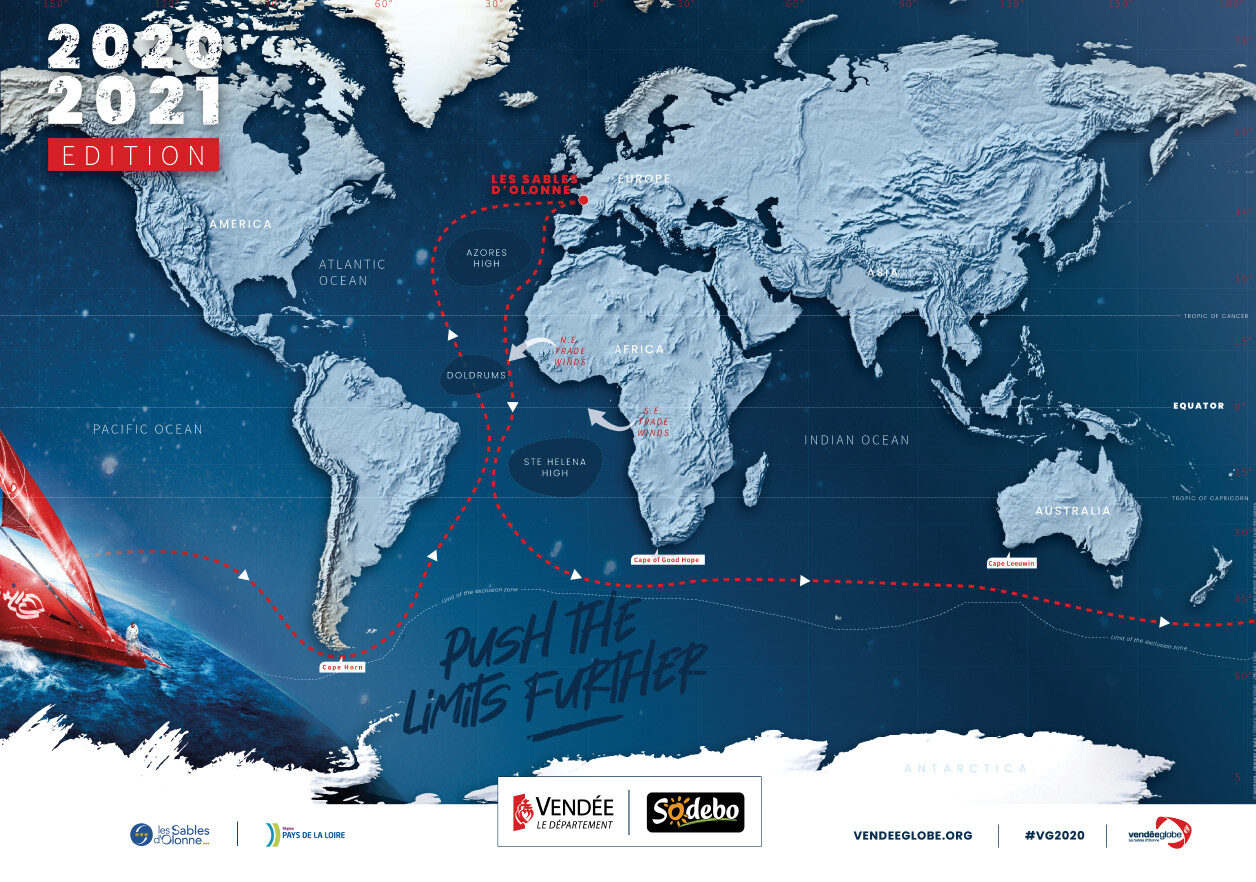
In April 1969 after 313 days at sea, British sailor Robin Knox-Johnston finally reached his goal. Twenty years later after having won the BOC Challenge twice (solo round the world with stopovers), navigator Philippe Jeantot introduced the idea of a new race around the world non-stop!
The Vendée Globe race was born in Nov 1989 as 13 sailors took the start of the first edition which lasted over three months. Only seven returned to Les Sables d’Olonne, France.
The eight editions of what is now called the Everest of the seas by the public has enabled 167 contenders to take the start of this extraordinary race, but only 89 of them have managed to cross the finish line. Which is extraordinary!
This alone shows the extreme difficulty of this global event in which solo racers are confronted by freezing cold, gigantic waves and heavy skies which sweep across the oceans of the Southern Hemisphere.
This year’s edition features 33 competitors which is a record. Six women. Also, a record! Nineteen of the boats are foilers, with eight new boats amongst the fleet.
The race itself is first and foremost a journey beyond the seas and deep down, oneself.
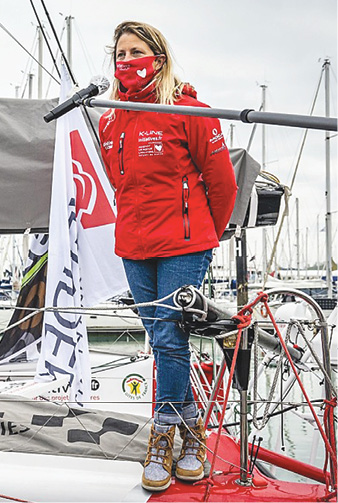
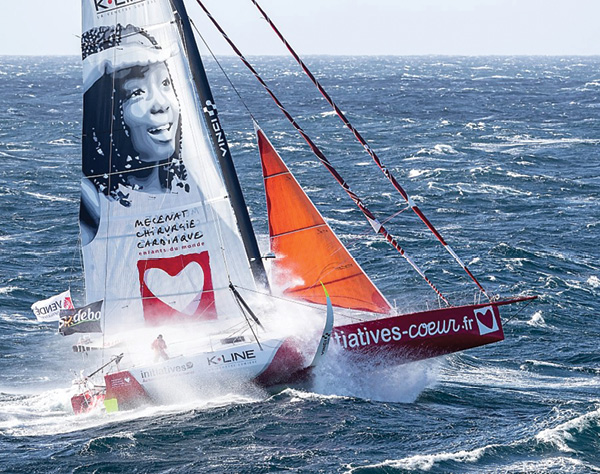
It has rewarded the great sailors of their era. Titouan Lamazou in 1990, Alain Gautier in 1993, Christophe Auguin in 1997, Vincent Riou in 2005, François Gabartin 2013 and Armel LeCléac’h (The Jackal) during the last edition in 2017.
Michel Desjoyeaux is the only sailor to win the race twice in 2001 and 2009.
The rules are clear. One man or one woman and a boat. This is a solo race and no one apart from the skipper is allowed aboard the boat during the race. The only exception is for having to rescue a fellow competitor in distress.
It has happened twice, in the Vendée Globe’s third edition in 1993 when Pete Goss arrived to save Raphaël Dinelli and again in 2009 when Vincent Riou rescued Jean Le Cam when he capsized near Cape Horn.
In the Vendée Globe, the sailor is well and truly alone. You have to find your own way around and carry out any repairs following on from damage, which is likely to happen and they have to take care of themselves when injured or ill.
As for technical assistance, it’s very simple: they are strictly forbidden to go alongside another boat or to allow a third party aboard. The sailors may consult the designers or their technical team to get information about how best to carry out a repair, but it is up to them alone to carry out this work with the means they have on board, while continuing to sail as best they can.
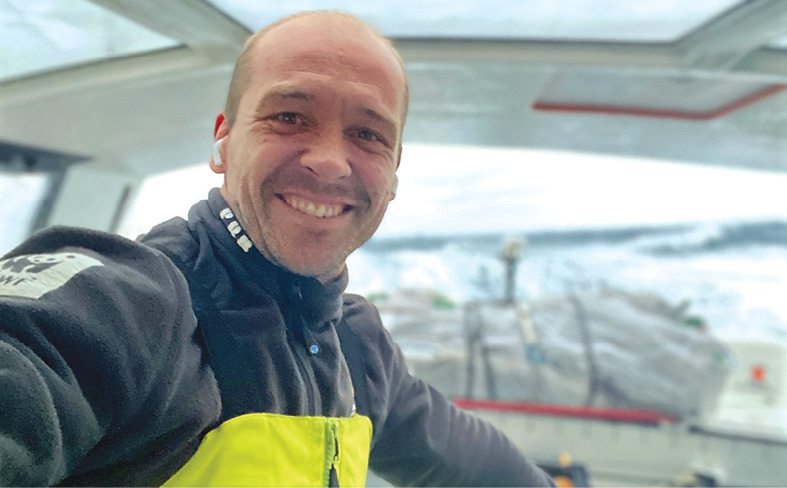
Sixty-foot monohulls have been contesting the Vendée Globe since the race’s inception. In 1991, Christophe Auguin, Isabelle Autissier, Alain Gautier and Jean-Luc Van Den Heede created the IMOCA Class (International Monohull Open Class Association.) The yacht shall be a monohull measuring between 59- and 60-feet (17.98m and 18.28m) in length with its heel angle limited to 10 degrees. The latest foiling generation can sail at speeds of up to 40 knots.
In 2018, the class inaugurated the IMOCA Globe Series: its four-year championship including two of the other “stars” round the world events. The Ocean Race (mixed crew) set to start now in the autumn of 2022 and the Route du Rhum, the Transat Jacques Vabre.
The boats of the Vendée Globe all measure 18-28 m long (60-feet) for a 4.50 draught. With a large sail area, they are the most powerful monohulls on the planet led by a solo skipper. They can go beyond 40 knots in downwind conditions, and have a standardized keel, a choice between two masts, conventional or wing-mast. They have a limited number of appendices and ballasts that are now imposed for new boats. The rest is up to the architects.
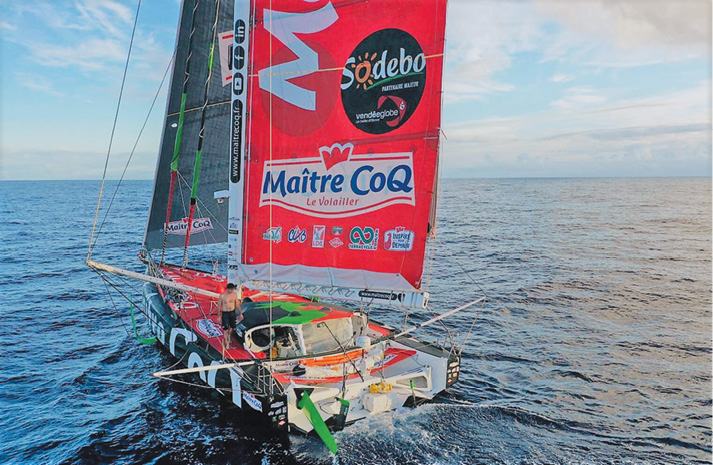
The racecourse covers 21,638 miles of the circumference of the earth and the distance of reference around the world. The race record is 74 days, three hours, 35 minutes and 46 seconds set in 2017 during the last edition by Armel LeCléac’h on Banque Popular.
The journey sends you down the Atlantic, around Cape Horn then across both the Indian and Pacific oceans, then back up the Atlantic to finish where you started in the French Port City of les Sables d’Olonne.
In reality, during many of the previous editions a majority of competitors have sometimes sailed well over 28,000 miles as they deal with the wind, waves, swell and ice in their maneuvers as they tack, jibe and surf in a continuous chain of broken lines, zigzags, detours and changes in course on their lonely voyages around the lower half of the planet.
The imposing Trophy of the Vendée Globe is a piece of artwork in silver-plated bronze designed by Philippe Macheret. Everything in it evokes circumnavigation. It is composed of an elegant rigging surrounded by a terrestrial globe and sits on a pedestal in the shape of a winch.
Clarisse
Clarisse Crémer is sailing on Banque Populaire X. She was born in Paris, studied at HEC and created a start-up. A clear path before discovering ocean racing in Brittany five years ago. And like all her previous projects, she embarked on it with passion and self-sacrifice to the point of being ready, at the age of 30, to take part in her first circumnavigation of the world.

Crémer discovered sailing during her vacations between Brittany and the Channel Islands, between regattas and her first adventurous crossings. A model of marketing relevance that allowed her to tell her story, as a young woman setting off on the Mini-Transat 2017, an example of personal challenge.
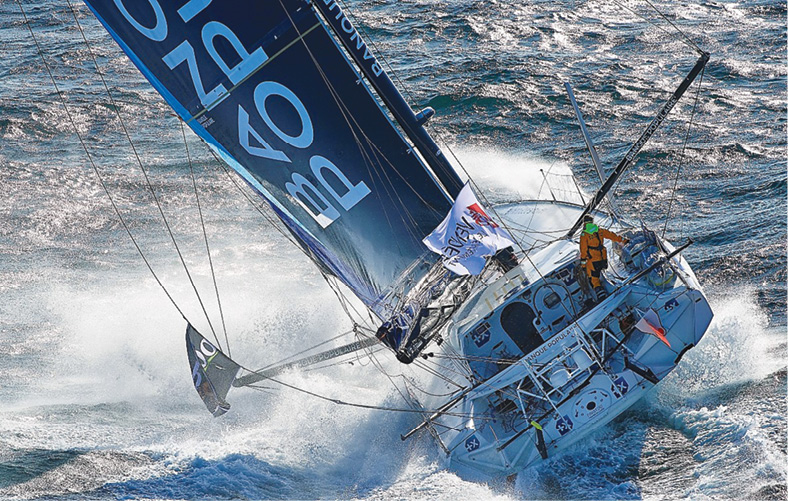
On the Atlantic, for her first ocean navigation, she proved to be as good a sailor as she was a communicator, finishing second in the Series ranking. A miracle? Not really: Clarisse is working. A lot.
But unfortunately, her first week out was a memorable one for the young Parisian as she scalded her “privates” with a hot cup of tea while sitting comfortably mid-pack in 19th place.
“For the moment I have the most ridiculous concern in the Vendée Globe!” exclaimed Cremer to her media team.
After having bypassed the storm Theta, Cremer on Banque Populaire X took advantage of a break in the weather to have a cup of tea.
“I cleverly placed it between my legs. I spilled it entirely on me!
“It’s going well for now even though it was very painful at the time. During the day, I had less pain than I imagined even though I was a little stunned. There, it does not hurt too much. I have to watch; I have creams so that it doesn’t get infected.
“I try not to think too much about the competitors because that is too much for me. I have to concentrate on my trajectories. I’m less focused on the rankings than at the beginning and that feels a lot of good. It looks a bit like the postcard picture of offshore sailing. It’s pretty, I take advantage of it!
“My mood has completely changed because I am all wound up!
“I am suffering quite badly but thankfully was able to speak to the doctor and he has sent me a course of creams and pain killers to use. There you go, I am laughing but I will take great, great care given where I have been burnt, to not get any infection.
“At least I have an excuse for losing a few places on the ranking! You laugh and you cry, well, that is your normal life on the boat. So, thank you to those who have supported me because it really was very painful, and I did panic and it will continue to annoy me. Now I am taking Doliprane painkillers. So, there is a new adventure ahead of me.”
Isabelle Joschke has returned to her favorite playing field on board MACSF as the high seas through the front door with the Vendée Globe after years of fighting on the Figaro circuit. The French-German navigator shows her talent best when on long distance races.
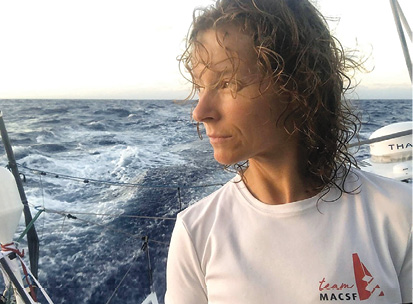
She discovered sailing at the Glénans School and started her career in 2005 when she decided to enter the Mini circuit. After a first transatlantic crossing, she launched an ambitious project by building a prototype aimed at winning. She held a series of podiums and even won the first leg of the Mini-Transat.
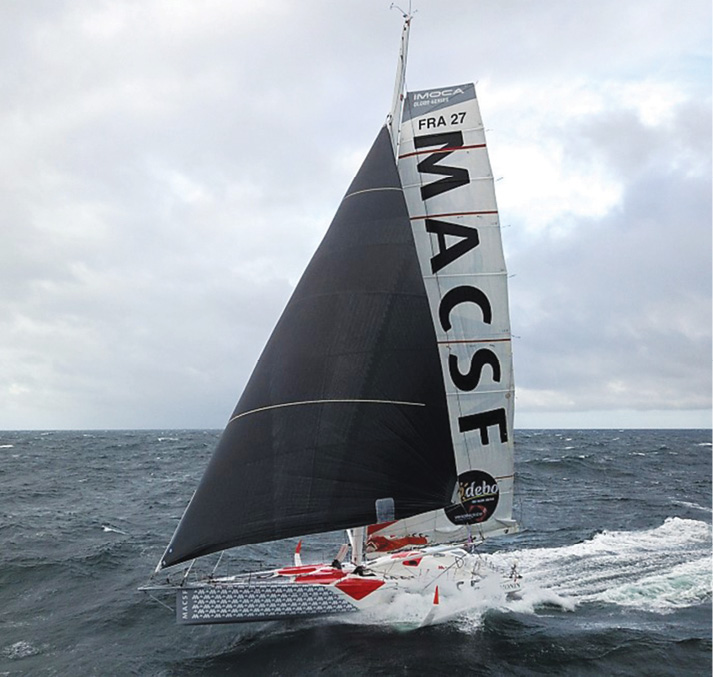
MACSF hit some trouble when the push pit and some aft stanchions were ripped from the deck when a sheet block exploded. Joschke was unhurt but will need to improve her security at the back of the boat before she heads into the Big South for the first time.
She lost the aft push pit when the gennaker sheet block broke and the sheet pulled away part of the push pit and some lifelines. She made a makeshift repair overnight to secure the boat. She and her technical team are talking about how to make a more long-term repair over the coming days when the conditions are more favorable.
The aft push pit is a fundamental safety element at the back of her boat, but her repair is not affecting the performance of MACSF in any way.
“I played it safe on the outset of the race because I did not want to go right into the storm coming towards us off the coast of Portugal,” said Joshke. “My objective is above all to finish and I did not want to have a problem right near the start of the Vendée Globe, which has affected me too close to the start on other transatlantic races.
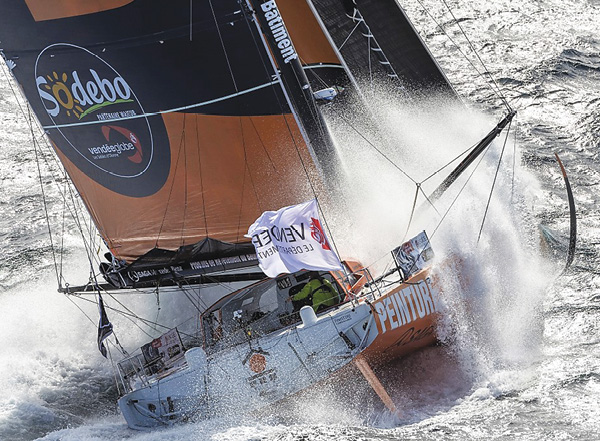
“Since then, I am on the attack and I have lot of ground to make up,” related Joshke. “Like many of my competitors, I have had to stop and repair things; lower the main sail twice, go up the mast to the height of the Solent sail to fix a hook.
“It is a compromise with trying to go fast and also to preserve my boat. I found myself in this dilemma right at the start of my race. It is not easy to manage. I try and remember that the real priority is to get to complete this race. I really want to see Cape Horn!
“I will also be entering unchartered waters for me. The furthest south I have been is Rio, so there will be lots of new things for me, which I find both exciting but also a little apprehensive.”
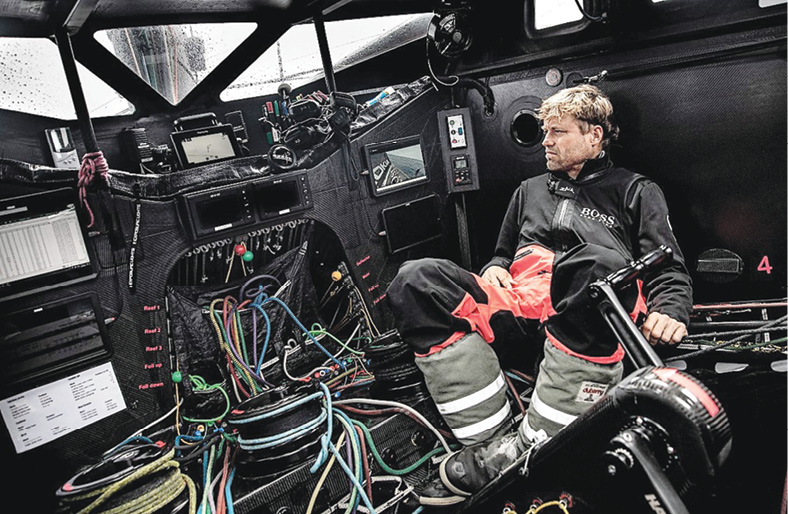
Acknowledgements go out to the Vendée Globe and Hugo Boss teams for their editorial contributions to this article. In the day and age of Covid-19 as in-person events and reporting are at a minimum, we appreciate their efforts to make these stories more possible.
Thanks for checking in! mark@yachtsmanmagazine.com



